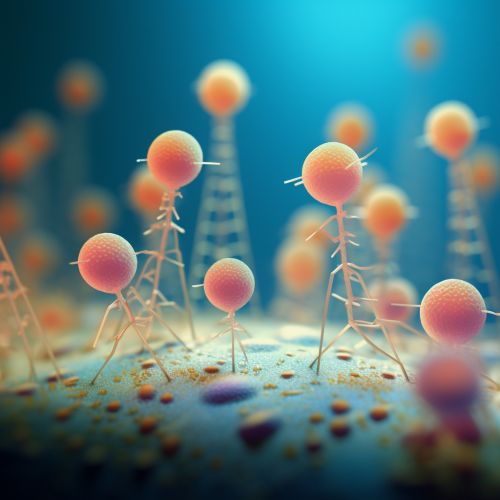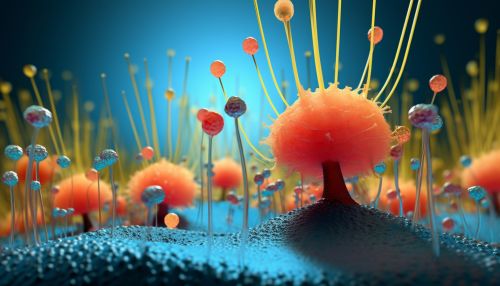Transduction
Overview
Transduction is a process in genetics where bacteria transfer genetic material using bacteriophages. This process is one of the three modes of genetic exchange in bacteria, the other two being conjugation and transformation. Transduction does not require physical contact between the donor and recipient cells, unlike conjugation.


Types of Transduction
Transduction is divided into two types: generalized transduction and specialized transduction.
Generalized Transduction
In generalized transduction, any part of the bacterial genome can be transferred from one bacterium to another. This process is mediated by bacteriophages, which are viruses that infect bacteria. The bacteriophage attaches to a bacterium and injects its DNA. The phage DNA then directs the host cell's machinery to produce more phages. Occasionally, the phage DNA may mistakenly encapsulate a piece of bacterial DNA into a phage particle, which can then be transferred to another bacterium.
Specialized Transduction
Specialized transduction, on the other hand, involves the transfer of specific portions of the bacterial genome. This occurs when a temperate bacteriophage integrates its DNA into the bacterial chromosome at specific sites. When the phage DNA is excised from the bacterial chromosome, it may carry with it adjacent bacterial genes, which can then be transferred to another bacterium.
Mechanism of Transduction
The mechanism of transduction varies between generalized and specialized transduction.
Mechanism of Generalized Transduction
In generalized transduction, the bacteriophage attaches to a bacterium and injects its DNA. The phage DNA then directs the host cell's machinery to produce more phages. Occasionally, the phage DNA may mistakenly encapsulate a piece of bacterial DNA into a phage particle. This particle, called a transducing phage, can then infect another bacterium and transfer the DNA fragment.
Mechanism of Specialized Transduction
In specialized transduction, a temperate bacteriophage integrates its DNA into the bacterial chromosome at specific sites. When the phage DNA is excised from the bacterial chromosome, it may carry with it adjacent bacterial genes. These genes can then be transferred to another bacterium when the phage infects a new host.
Role in Bacterial Evolution
Transduction plays a significant role in bacterial evolution. By transferring genetic material from one bacterium to another, transduction facilitates the spread of beneficial traits, such as antibiotic resistance, among bacterial populations. This process can also introduce genetic diversity, which can enhance the adaptability and survival of bacterial populations in changing environments.
Applications in Biotechnology
Transduction has been utilized in biotechnology for various purposes. It serves as a tool for genetic engineering, allowing scientists to introduce specific genes into bacterial cells. This has been used in the production of recombinant proteins, such as insulin and growth hormones. Transduction is also used in gene therapy, where it can be used to introduce therapeutic genes into human cells to treat genetic disorders.
